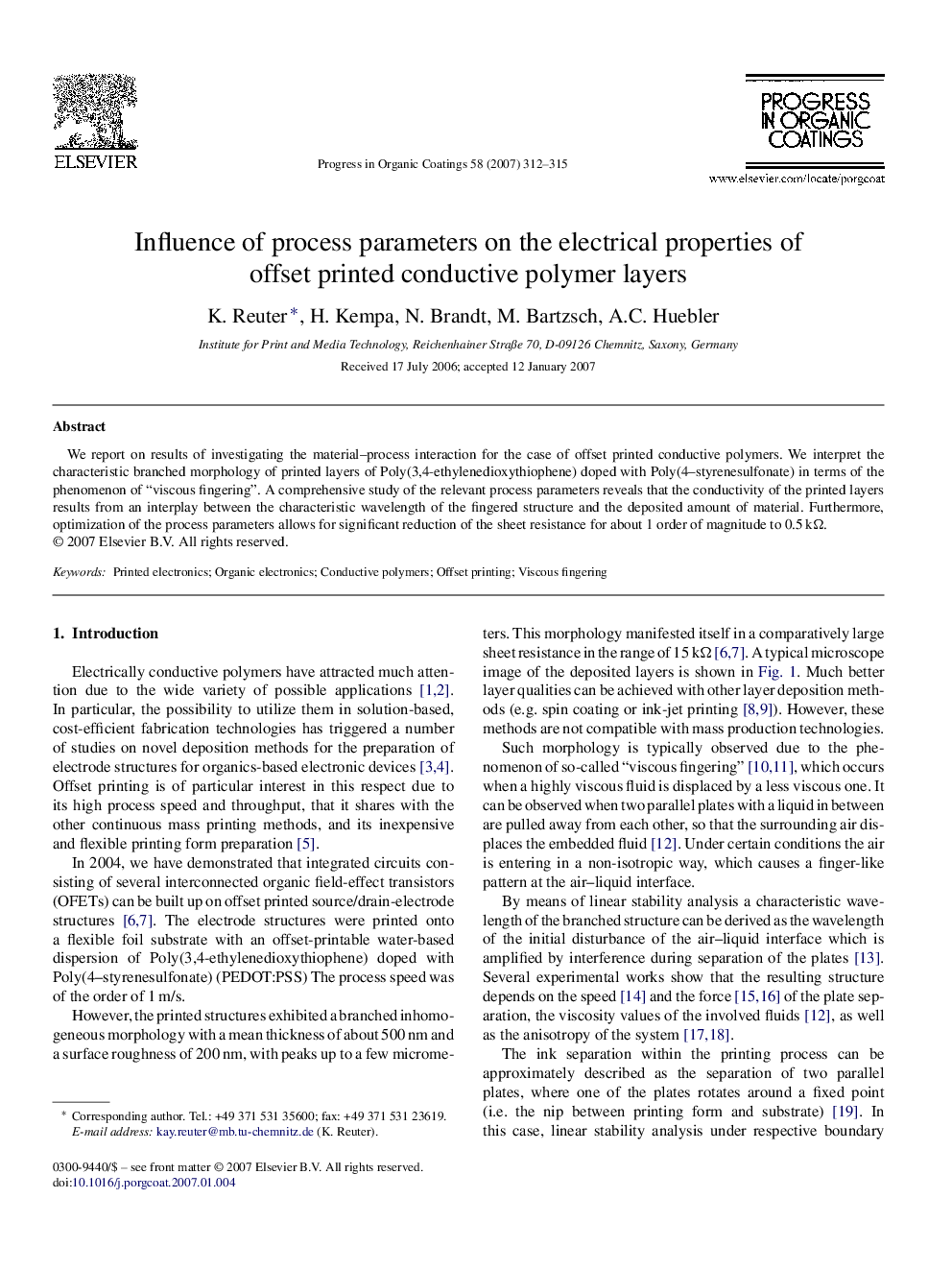| Article ID | Journal | Published Year | Pages | File Type |
|---|---|---|---|---|
| 694230 | Progress in Organic Coatings | 2007 | 4 Pages |
Abstract
We report on results of investigating the material–process interaction for the case of offset printed conductive polymers. We interpret the characteristic branched morphology of printed layers of Poly(3,4-ethylenedioxythiophene) doped with Poly(4–styrenesulfonate) in terms of the phenomenon of “viscous fingering”. A comprehensive study of the relevant process parameters reveals that the conductivity of the printed layers results from an interplay between the characteristic wavelength of the fingered structure and the deposited amount of material. Furthermore, optimization of the process parameters allows for significant reduction of the sheet resistance for about 1 order of magnitude to 0.5 kΩ.
Related Topics
Physical Sciences and Engineering
Chemical Engineering
Process Chemistry and Technology
Authors
K. Reuter, H. Kempa, N. Brandt, M. Bartzsch, A.C. Huebler,
